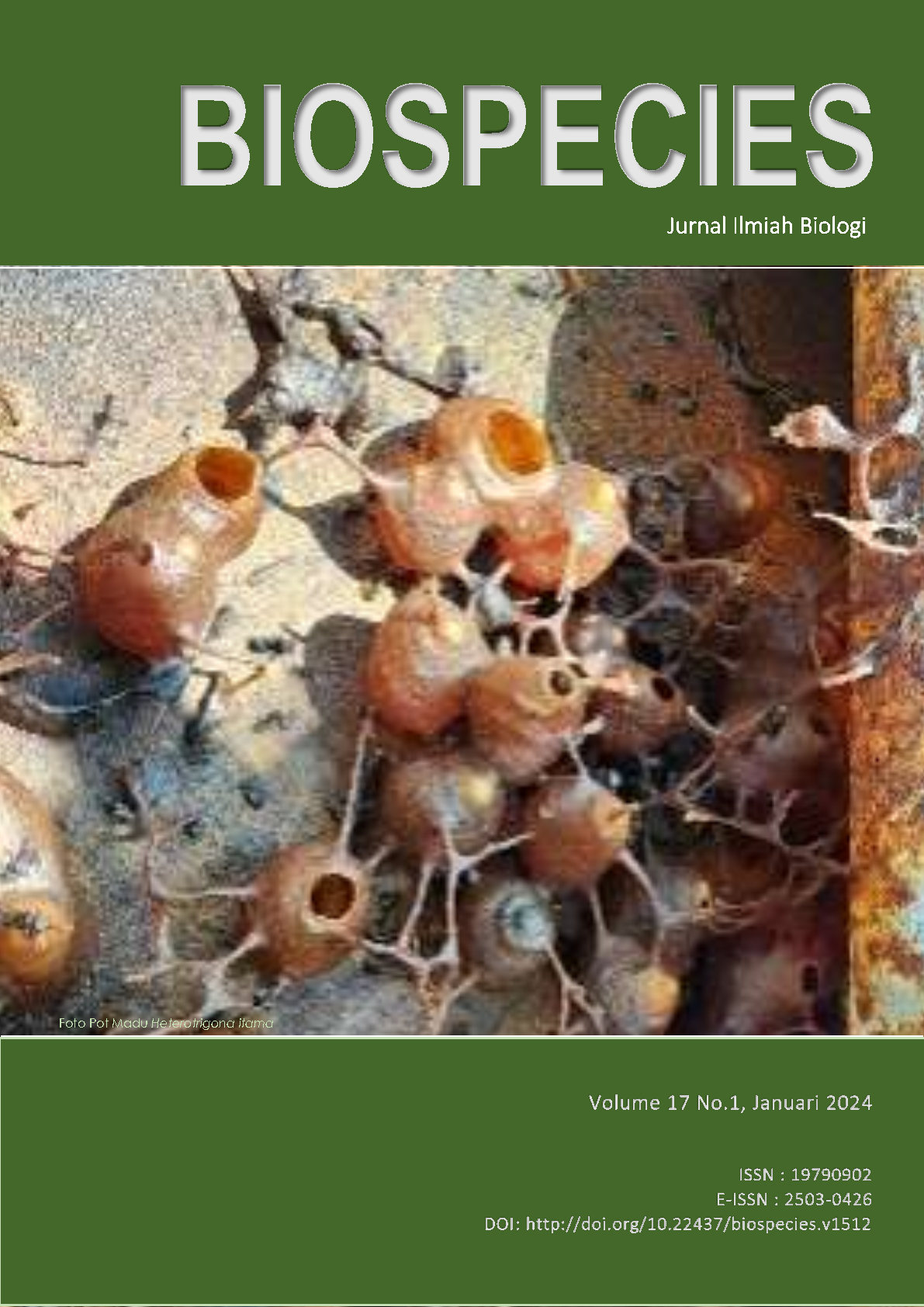Callus induction Leaf Explants Pencil Orchid (Papillionanthe hookeriana Rchb.f.) on the combination of growth regulators 2,4-D and BAP
DOI:
https://doi.org/10.22437/biospecies.v17i1.31492Keywords:
Callus, Pencil orchid, tissue cultureAbstract
The formation of callus is one of the indications of success in propagation through tissue culture. A crucial factor in callus induction is the accuracy in determining the type and concentration of auxin and cytokinin growth regulators in the culture media. This research aims to obtain the appropriate concentration of auxin (2,4-D) and cytokinin (BAP) growth regulators that can induce the formation of embryonic callus propagules from pencil orchid plants using tissue culture propagation techniques. The treatments tested in this study were the application of several concentrations of auxin (2,4-D) at 0.5; 1.0; 1.5, and 2.0 ppm combined with cytokinin (BAP) at concentrations of 0.0 and 0.5 ppm. The experiment was arranged in a Completely Randomized Design (CRD) with 15 explants for each treatment. The parameters observed were the response time of the explant (swelling), the percentage of explants swelling, the appearance of callus, the percentage of explants forming callus, callus structure, and callus color. The results showed that the pencil orchid leaf explants responded by swelling and forming callus. Swelling occurred fastest two weeks after culturing. The highest percentage of swelling and callus formation was obtained from the treatment of MS media supplemented with a combination of 2,4-D 2.0 ppm + 0.5 ppm cytokinin BAP, with 100% of the explants swelling and 26,67% forming callus. The formed callus was friable in structure and white in color.



